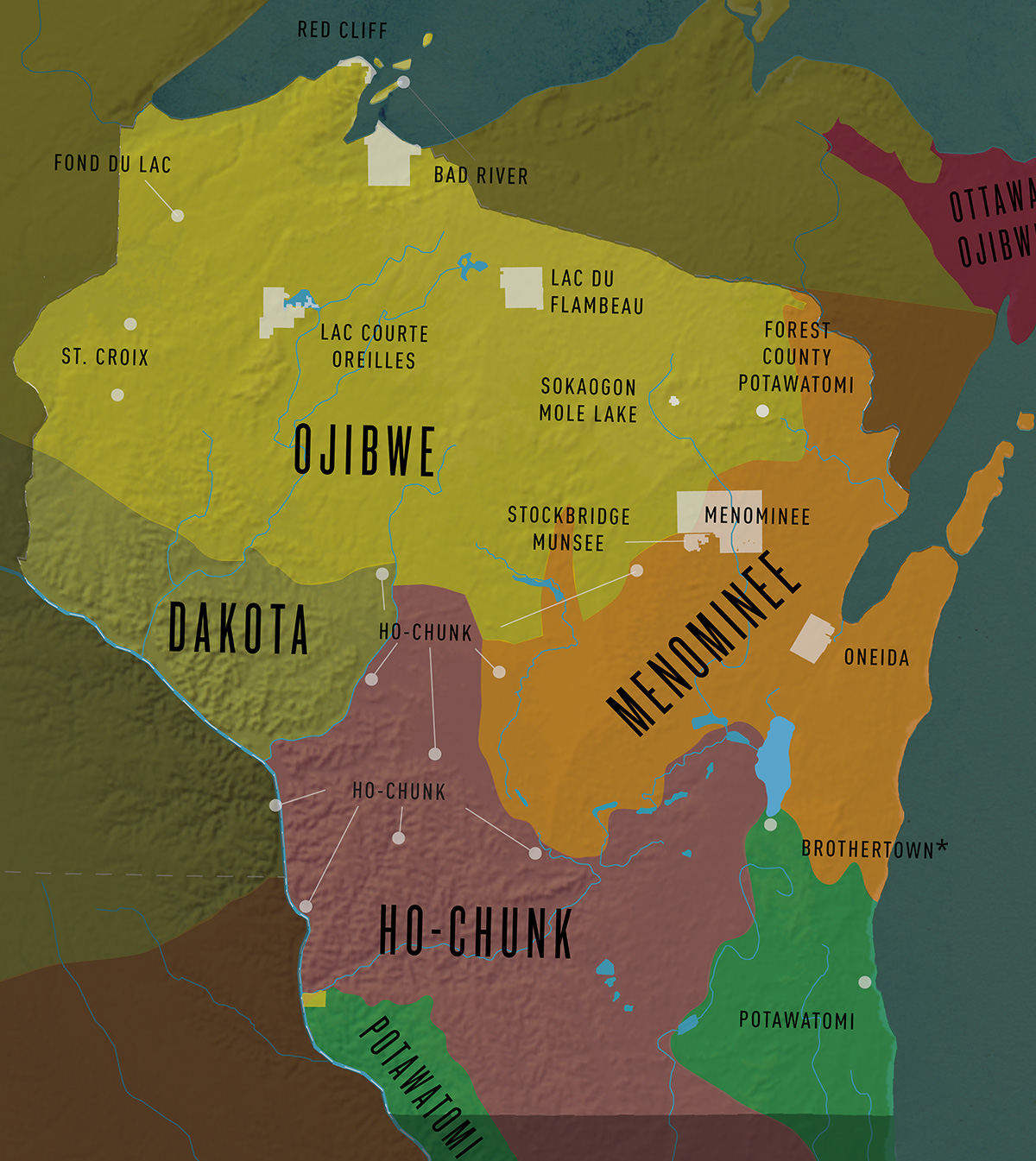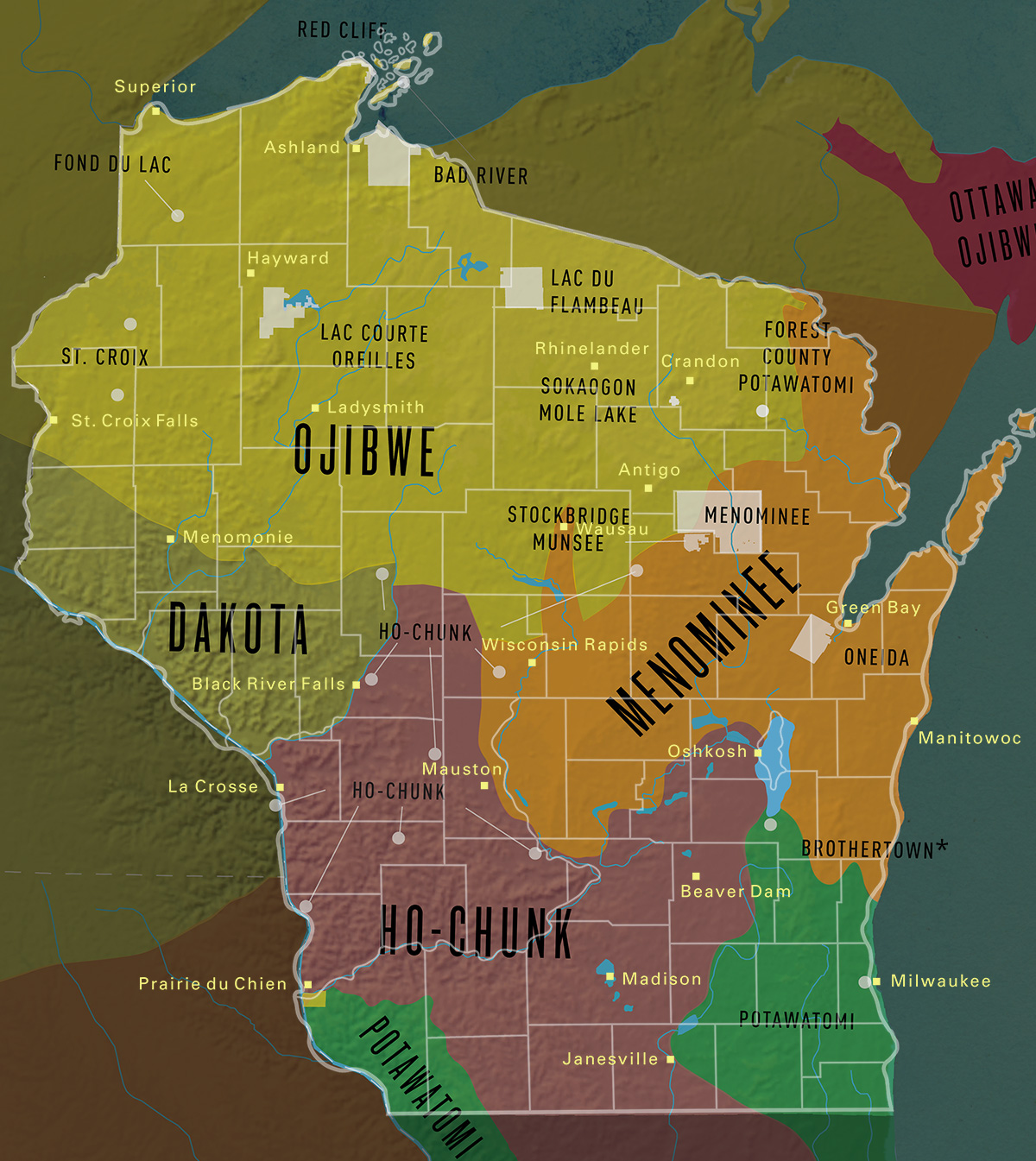
Guardians of the Waters: The Enduring Legacy of Wisconsin’s Native Nations
Wisconsin, a name derived from the Ojibwe "Ouisconsin" meaning "gathering of the waters," is profoundly shaped by the enduring presence and vibrant cultures of its Native American nations. Far from being relics of the past, these sovereign tribes are dynamic communities, stewards of ancient traditions, and powerful forces in the state’s economic, political, and cultural landscape. Their story is one of resilience, adaptation, and an unwavering commitment to self-determination against centuries of systemic pressures.
Today, Wisconsin is home to eleven federally recognized Native American tribes: the Bad River Band of Lake Superior Chippewa, Lac Courte Oreilles Band of Lake Superior Chippewa, Lac du Flambeau Band of Lake Superior Chippewa, Menominee Indian Tribe of Wisconsin, Oneida Nation, Forest County Potawatomi, Red Cliff Band of Lake Superior Chippewa, St. Croix Chippewa Indians of Wisconsin, Sokaogon Chippewa Community, Ho-Chunk Nation, and Stockbridge-Munsee Community Band of Mohican Indians. Additionally, the Brothertown Indian Nation is state-recognized, though not federally. Each possesses a unique history, language, and cultural heritage, yet they are united by a shared narrative of survival and a profound connection to the land.
A Deep Tapestry of History and Resilience
Long before European contact, the lands now known as Wisconsin thrived with complex Native societies. The Ho-Chunk (formerly Winnebago), Menominee, and Potawatomi were among the earliest inhabitants, with the Ojibwe (Chippewa) migrating into the northern regions later. These nations developed intricate systems of governance, trade, and spirituality, living in harmony with the rich natural resources of the Great Lakes region. Their lives were dictated by the seasons, marked by ceremonies, harvests, and migrations for hunting and fishing.
The arrival of European fur traders in the 17th century brought significant changes, introducing new technologies, diseases, and an economic system that slowly began to disrupt traditional ways of life. However, it was the 19th century that truly reshaped the Native landscape of Wisconsin. As American settlers pushed westward, a series of treaties, often coerced and poorly understood, led to the ceding of vast tribal lands to the U.S. government.
"The treaties were not just about land; they were about the very survival of our people," explains Dr. Margaret Noodin, a scholar of Anishinaabemowin (Ojibwe language) and director of the Electa Quinney Institute for American Indian Education at the University of Wisconsin-Milwaukee. "Many of our ancestors signed agreements under duress, believing they were securing a future for their children, only to see promises broken."
Despite these challenges, many Wisconsin tribes resisted forced removal to reservations further west, a testament to their deep spiritual and ancestral ties to the land. The Menominee, for instance, fought to retain a portion of their ancestral territory, making them one of the few tribes in the U.S. to still occupy a part of their original homeland. The Ho-Chunk, repeatedly removed, often walked back to Wisconsin, demonstrating an incredible will to return to their spiritual home. This tenacity laid the groundwork for the assertion of sovereignty in the centuries to come.
Sovereignty: The Cornerstone of Self-Determination
At the heart of every Native American nation in Wisconsin is the concept of sovereignty – the inherent right to self-govern. This is not a right granted by the U.S. government but an inherent power predating the formation of the United States. Federal recognition affirms a government-to-government relationship, acknowledging these tribes as distinct political entities with their own laws, judicial systems, and governing bodies.
The mid-20th century saw a devastating federal policy known as "Termination," which sought to dissolve tribal governments and assimilate Native peoples into mainstream society. The Menominee were one of the few tribes terminated in Wisconsin, losing their reservation status and federal services in 1961. This led to severe economic hardship and a loss of community cohesion. However, through persistent activism and political organizing, they became the first terminated tribe to achieve federal restoration in 1973, a landmark victory that inspired other tribes nationwide.

The late 20th century marked a new era of self-determination, largely fueled by the advent of tribal gaming. Following the Indian Gaming Regulatory Act of 1988, tribes in Wisconsin, like those across the nation, established casinos. This economic engine transformed many communities, providing revenue that tribes could use to fund essential services that had long been underfunded or non-existent through federal allocations.
"Gaming allowed us to invest in our own people, in our own future," says a tribal leader, who wished to remain anonymous to speak freely on economic strategy. "We built schools, healthcare clinics, elder care facilities, and invested in cultural preservation programs. It’s not just about entertainment; it’s about rebuilding our nations from within."
The economic impact is significant. According to the Wisconsin Indian Gaming Association, tribal gaming operations are major employers and contribute billions to the state’s economy annually through wages, purchases, and taxes. This newfound economic independence has enabled tribes to diversify their economies beyond gaming, investing in tourism, sustainable forestry, manufacturing, and technology.
Cultural Resurgence and Environmental Stewardship
Beyond economic development, Wisconsin’s tribes are deeply committed to cultural preservation and revitalization. Language immersion programs are flourishing, aiming to teach the next generation ancestral languages like Anishinaabemowin, Ho-Chunk, and Menominee, which were suppressed for generations by boarding school policies. Traditional arts, ceremonies, storytelling, and dance are experiencing a powerful resurgence, reconnecting community members with their heritage.
"Our language is the heartbeat of our people," states an Ojibwe elder from Lac Courte Oreilles. "It carries our history, our values, our understanding of the world. To lose it would be to lose a part of ourselves."
Wisconsin’s tribes are also at the forefront of environmental stewardship, drawing on centuries of traditional ecological knowledge. They are often the first to speak out against threats to clean water, air, and land, recognizing their profound interconnectedness. The Bad River Band of Lake Superior Chippewa, for instance, has been a vocal opponent of proposed iron ore mining in the Penokee Hills, citing potential devastation to the vast Kakagon Sloughs – a critical wild rice ecosystem and their ancestral food source. Their legal and advocacy efforts highlight the spiritual and cultural importance of land and water, not just their economic value.
The Ojibwe tribes of northern Wisconsin have also famously asserted their treaty-guaranteed usufructuary rights (the right to hunt, fish, and gather on ceded territories). The landmark Voigt decision of 1983 affirmed these rights, leading to decades of legal battles and, at times, intense social conflict with non-Native residents over spearfishing. While tensions have largely subsided, the issue served as a powerful reminder of the enduring legal and moral obligations stemming from treaties and the tribes’ determination to uphold them.
Facing Contemporary Challenges
Despite significant progress, Wisconsin’s Native nations continue to face complex challenges. Disparities in health, education, and economic opportunity persist, often rooted in historical trauma and systemic inequities. Poverty rates remain higher in many tribal communities, and access to quality healthcare and educational resources can be limited.
Jurisdictional complexities between tribal, state, and federal governments can also create hurdles, particularly in areas like law enforcement, land use, and taxation. Misconceptions and a lack of understanding about tribal sovereignty and culture among the broader non-Native population also remain an ongoing issue.
"We are not a special interest group; we are governments, with inherent rights and responsibilities," says a representative of the Oneida Nation. "Education is key – for our own youth to understand their heritage, and for our non-Native neighbors to understand our unique status and contributions."
Looking Forward
The story of Native American tribes in Wisconsin is one of dynamic evolution. They are nations building strong futures on the foundations of ancient wisdom. Their ongoing efforts in economic development, cultural revitalization, environmental protection, and political advocacy are not just for their own people but contribute significantly to the fabric of Wisconsin as a whole.
As guardians of the waters and the land, Wisconsin’s Native nations embody resilience, self-determination, and a profound commitment to future generations. Their journey reminds us that true progress lies in acknowledging and respecting the sovereignty, history, and vibrant living cultures of all peoples who call this land home. Their presence continues to enrich Wisconsin, offering invaluable lessons in sustainability, community, and the enduring power of the human spirit.


